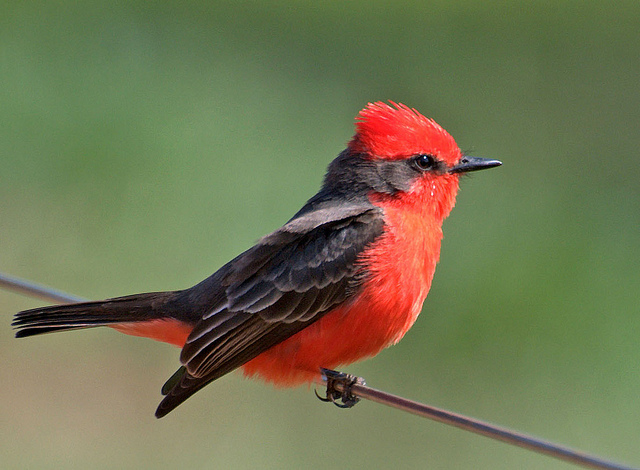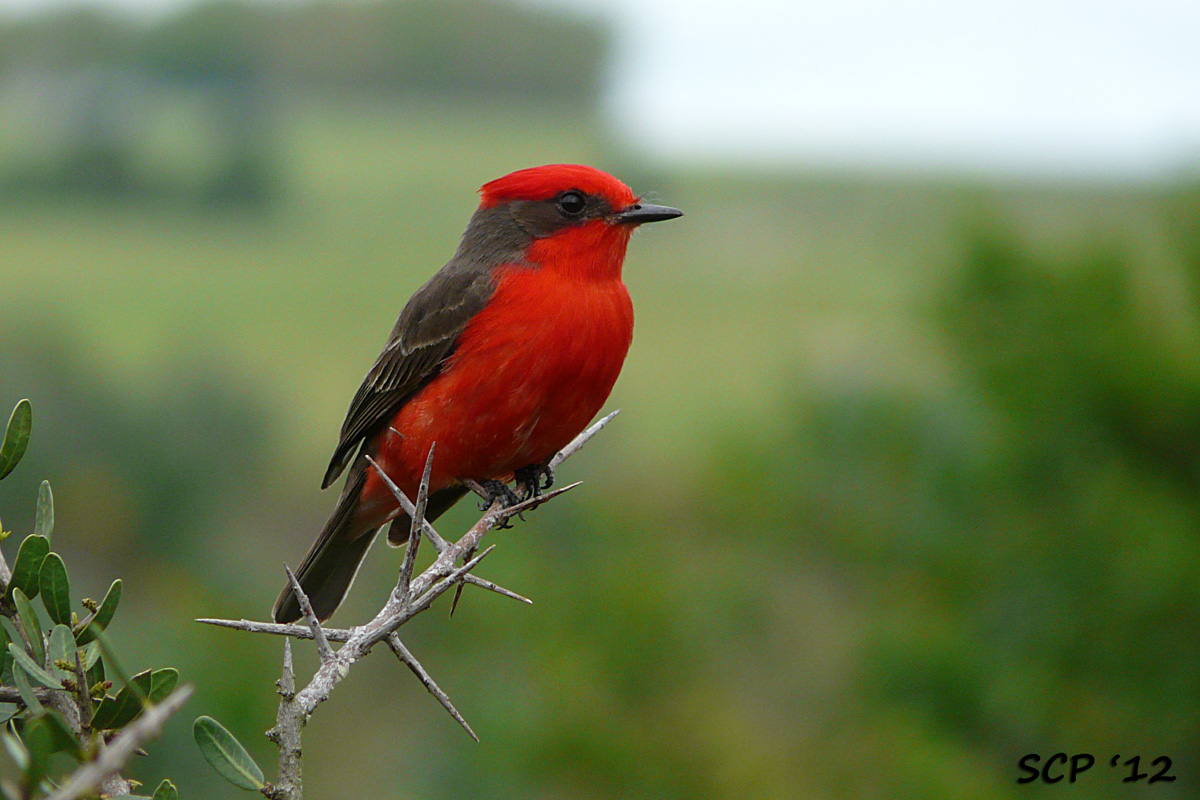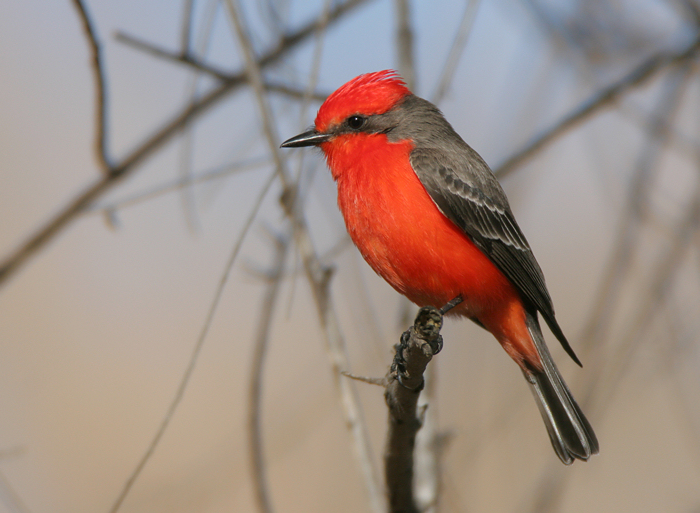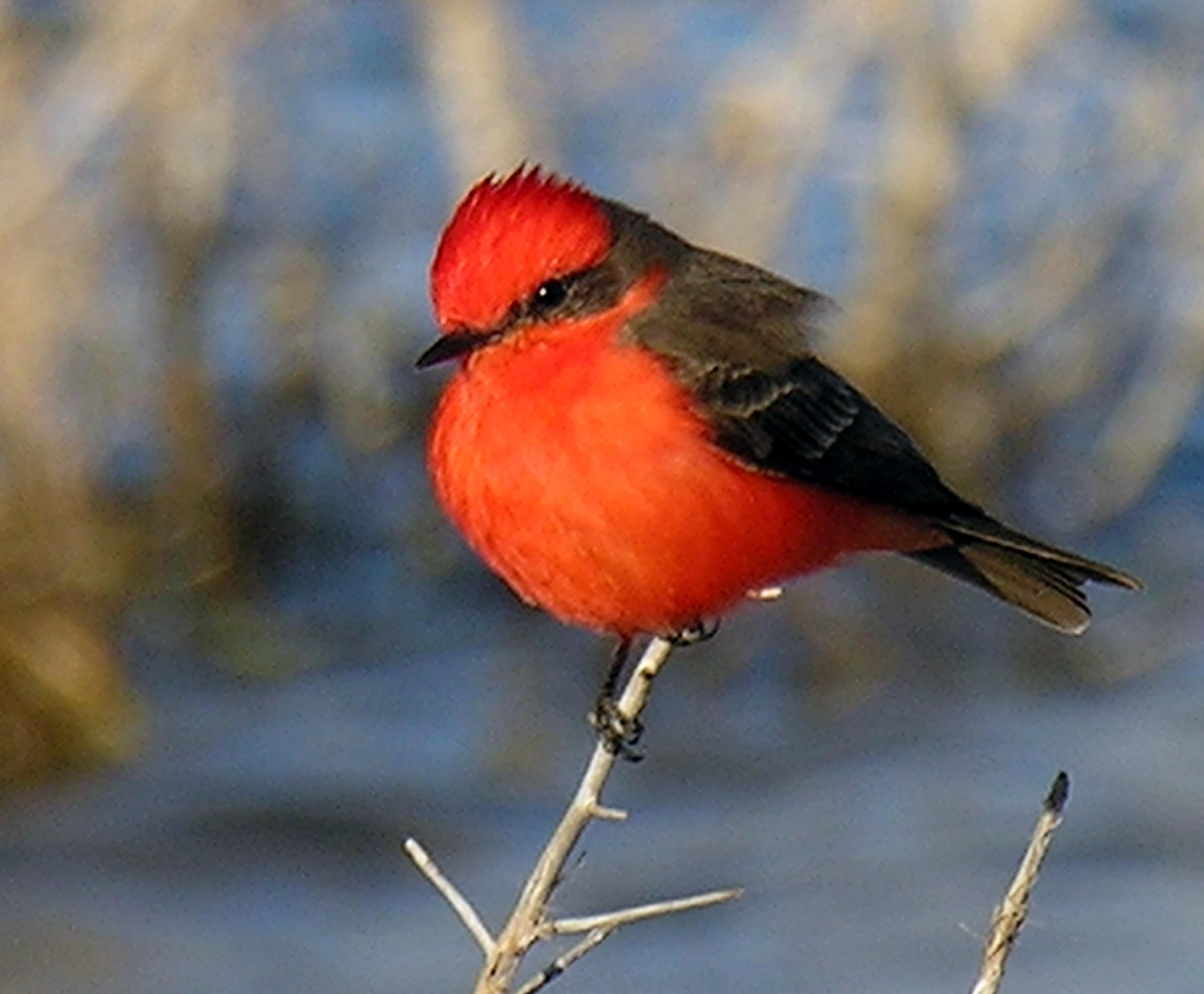
Pyrocephalus rubinus
SUBFAMILY
Fluvicolinae
TAXONOMY
Pyrocephalus rubinus Boddaert, 1783. Monotypic.
OTHER COMMON NAMES
French: Moucherolle vermillion; German: Purpurtyrann; Spanish:
Sangre de toro.
PHYSICAL CHARACTERISTICS
6 in (15.25 cm). Among the most colorful tyrannids, and certainly
the most brightly colored tyrannid in North America.
Plumage of males includes bright red crown and underparts,
blackish brown tail and upperparts, and dark brown lores and
mask joining at nape. Bill is short, broad, flat, and black; legs
and feet are brownish black. Females have a white chin, throat,
and chest, a pale pinkish belly and crissum, grayish brown upperparts,
and a thin white supercilliary stripe. The juvenile
male is similar to the adult male but more pale; the juvenile female
is similar to the adult female but with a yellow wash to
the belly and crissum.
DISTRIBUTION
Occurs from the southernmost regions of California, Arizona,
New Mexico, and Texas south to Argentina.
HABITAT
Desert, semidesert, scrub vegetation, forest edge, open forest,
and grassland with scattered trees. Often found near water
bodies, such as lakes, ponds, irrigation ditches, and cattle tanks.
BEHAVIOR
Lives singly or in pairs. Has a quiet and tame disposition; very
approachable. Often chooses a low perch. Wags and pumps
the tail. Vocalization follows a pattern during display flight.
While in direct flight, the call is a piercing, metallic “pseeup!”;
this is followed by a hovering phase with tail spread out and
crest erected, which is accompanied by a rapid “pi-pi-li-li-lising!”
FEEDING ECOLOGY AND DIET
Perches on a low branch, sights prey and sallies forth, hovering
to catch it. Returns to the same perch. Sometimes forages on
the ground. Feeds on insects, particularly bees.
REPRODUCTIVE BIOLOGY
Monogamously breeds twice a year. Cup-shaped nest is constructed
by the female in the fork of a horizontal branch or on
top of an abandoned nest. Eggs typically number two to four.
Female incubates them for 14 to 15 days, and the young, fed
by both parents, fledge after 14 to 16 days.
CONSERVATION STATUS
Not threatened, though populations in southeast California
and Texas declining; cause unknown.
SIGNIFICANCE TO HUMANS
Attractive to birders for its bright red color.
Other popular Animals
Photo Gallery of - Vermilion flycatcher




 Animalia Life
Animalia Life